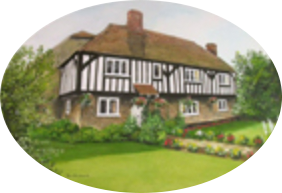Victorian Novelty Silver Combined Scent Bottle / Vinaigrette in the form of the Eddystone Lighthouse
Jane Brownett, London 1872
Photo 1 of 20
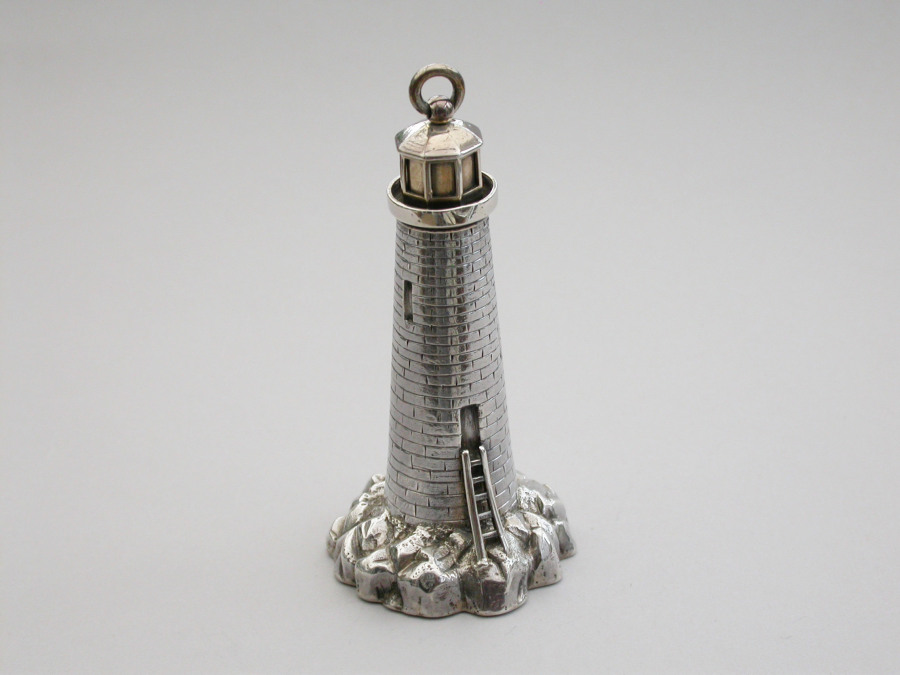



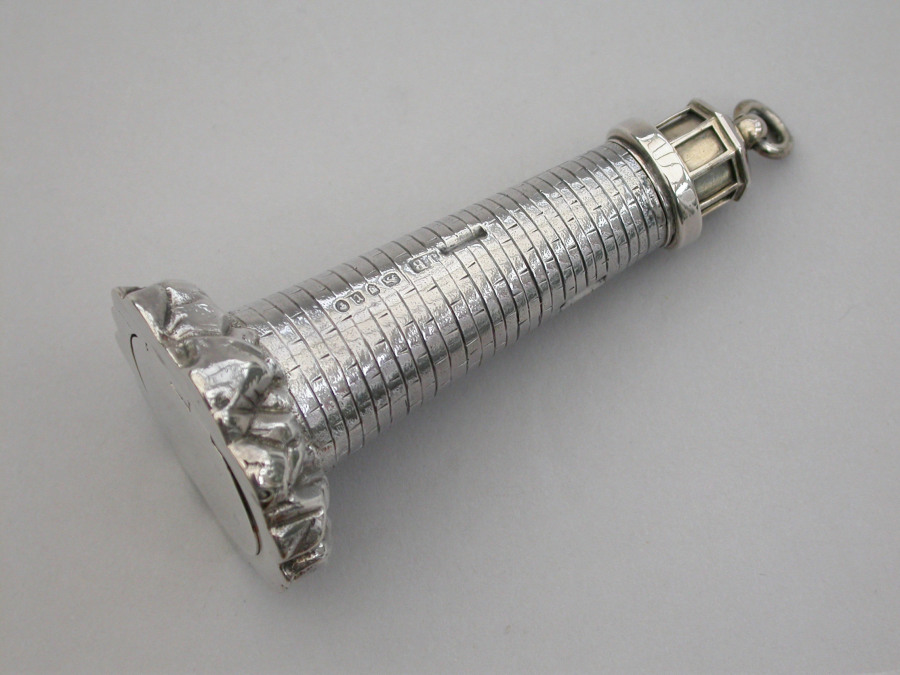
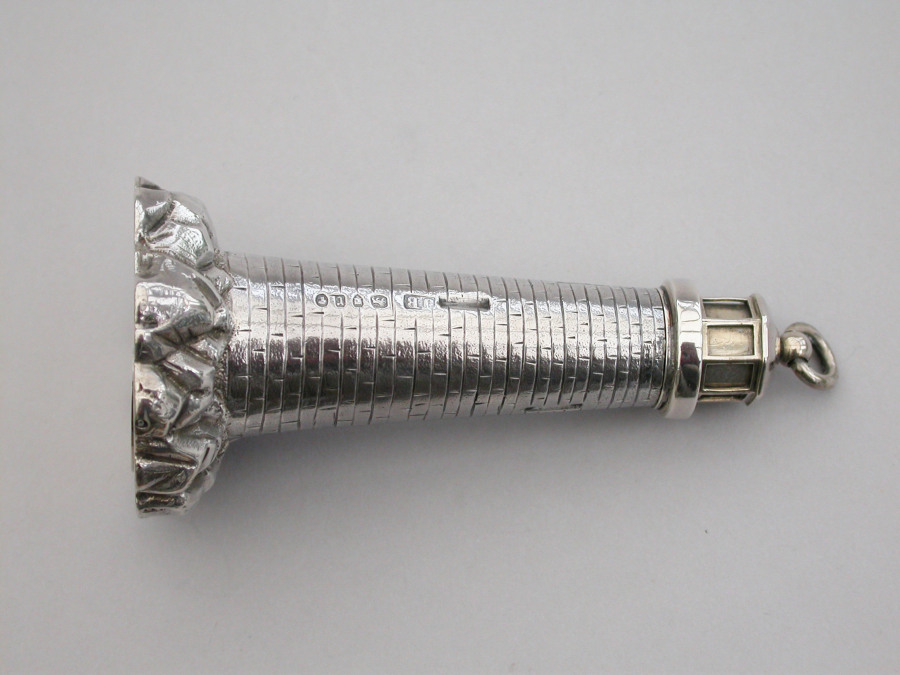

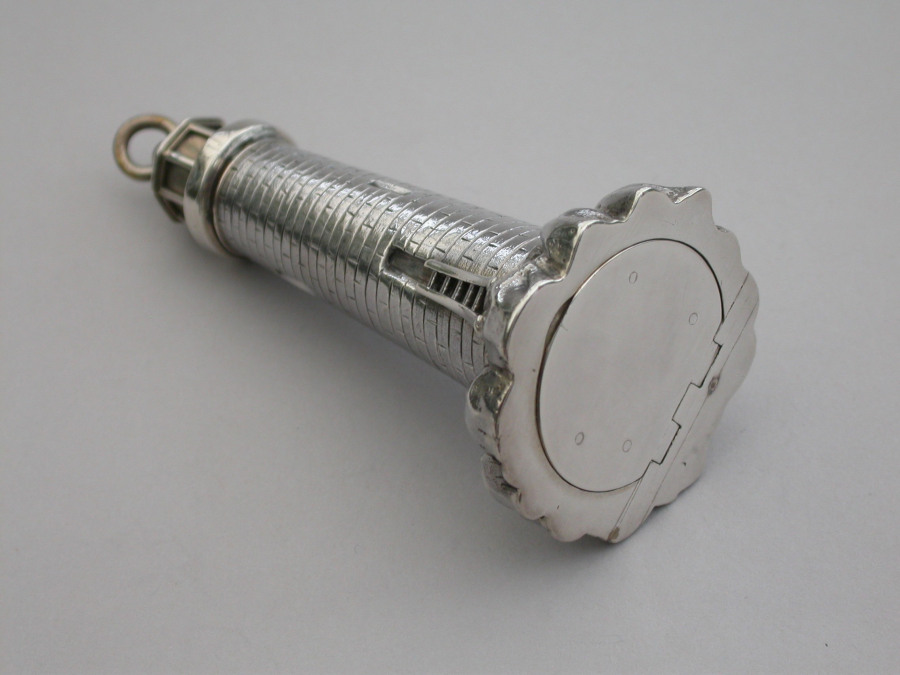
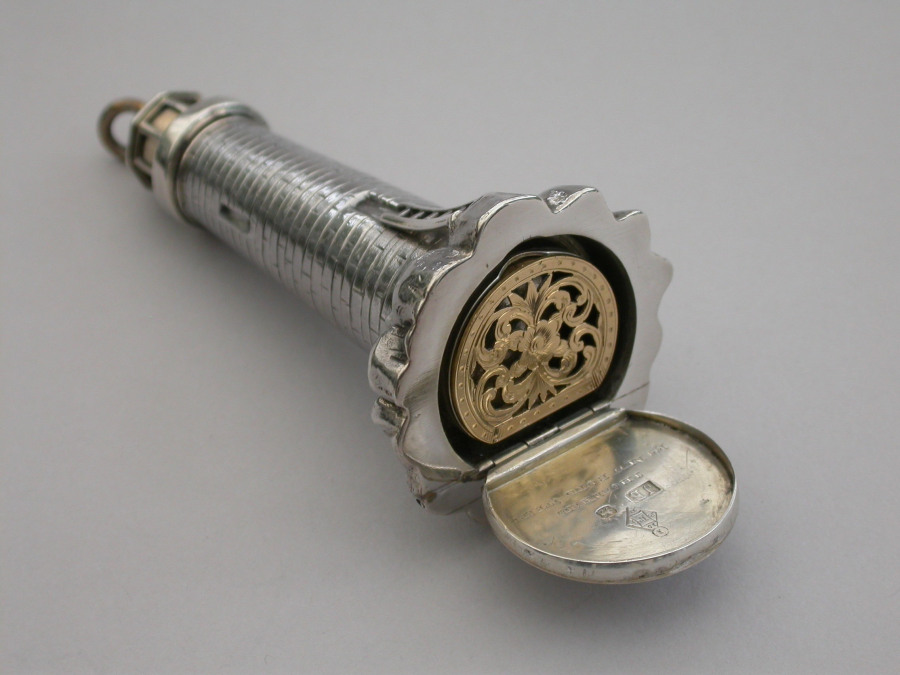
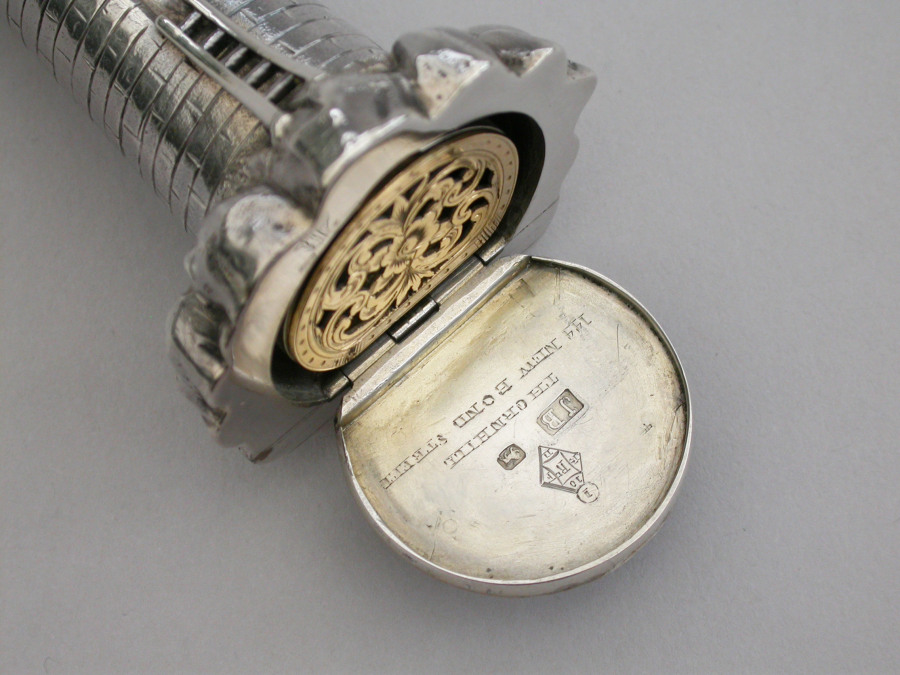
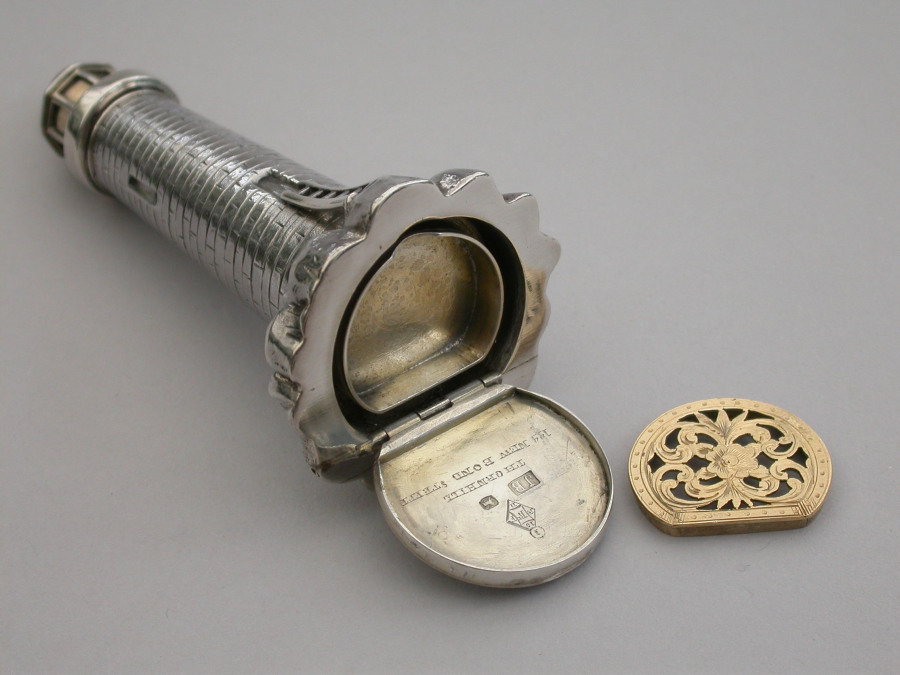

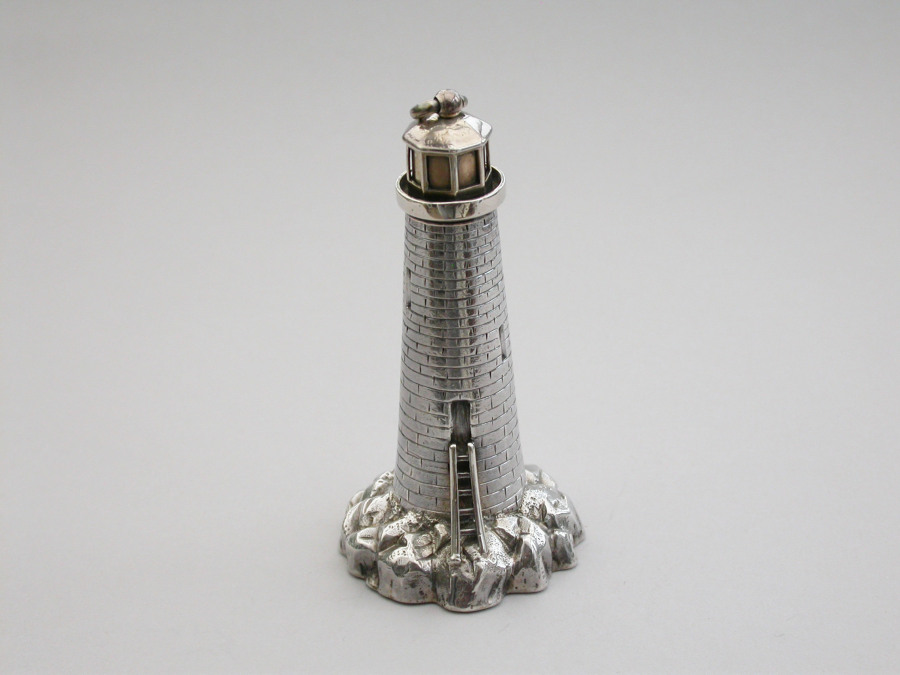
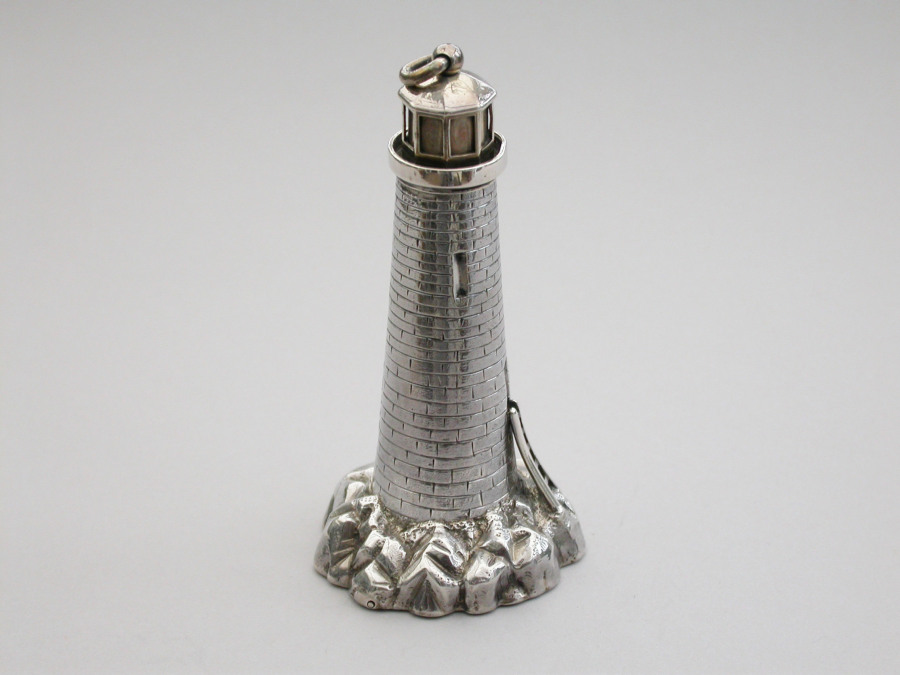


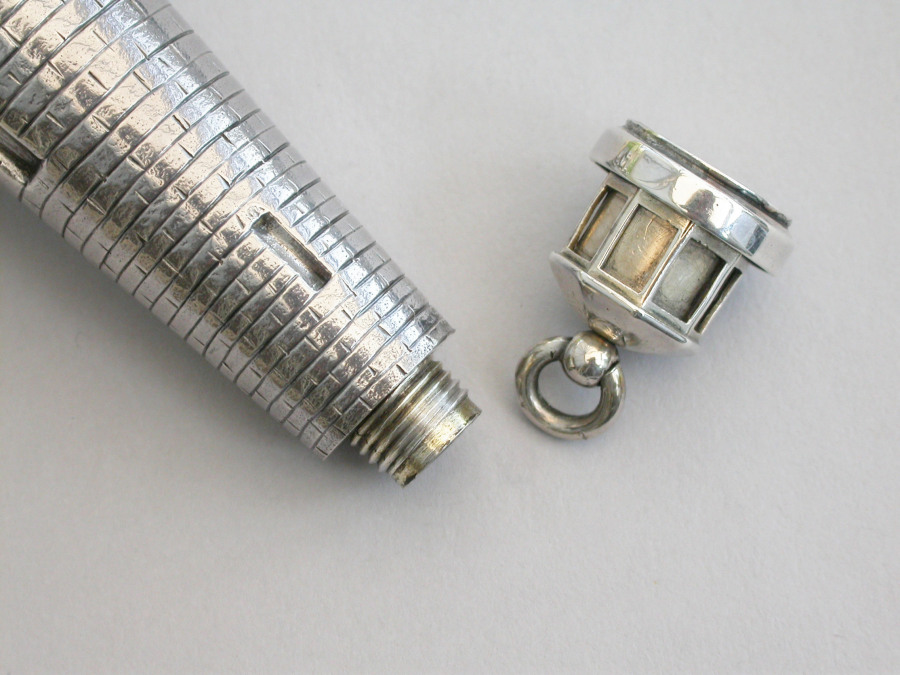

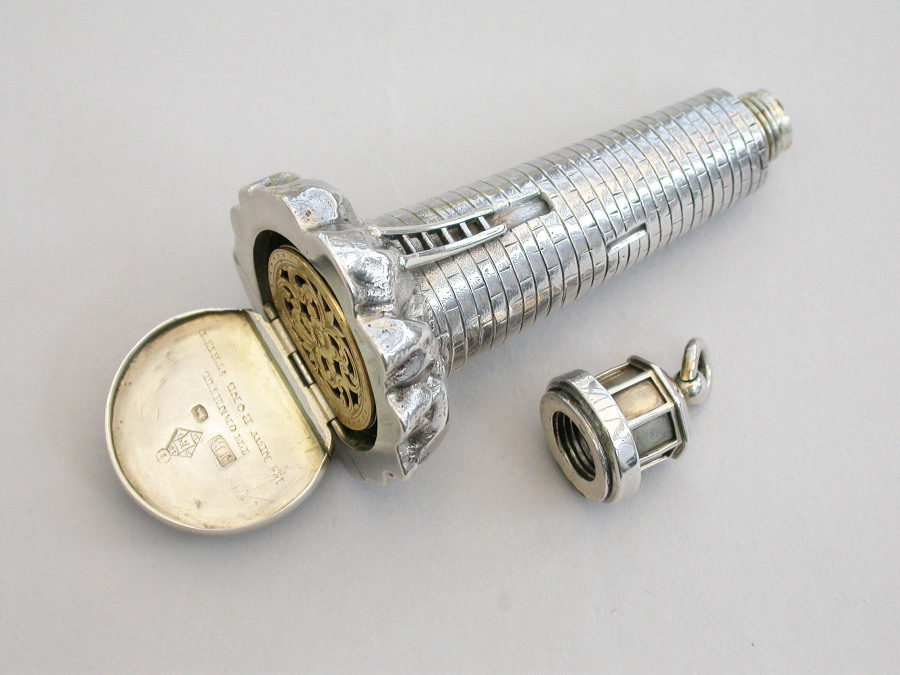
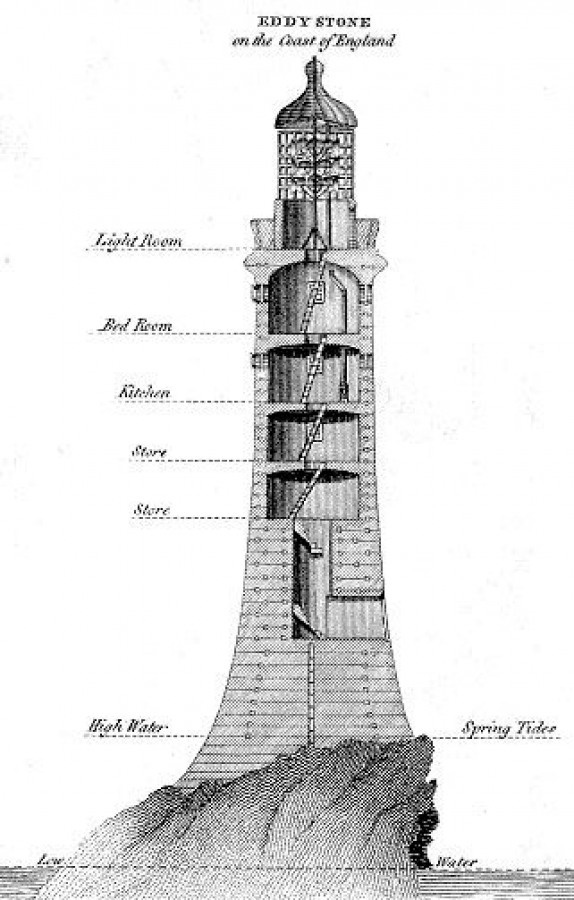
An extremely rare Victorian novelty silver and parcel gilt combination Scent Bottle and Vinaigrette made in the form of Smeaton's Lighthouse (the third Eddystone Lighthouse) standing on rocks, with brick built tower and four windows, a ladder to the doorway. The screw-off light chamber with attached suspension ring forming the lid to the scent bottle. The plain silver base with hinged cover opening to reveal a pull-off grille pierced with a central flower head.
By Jane Brownett, London, 1872. Also engraved with the retailers mark of Thornhill and a diamond registration mark.
Sold - £5,650.00
Condition
In good condition with no damage or repair, the base with possible erasure of initials or engraving.
Dimensions
H
80 mm
(3.15 inches)
DIA
40 mm
(1.57 inches)
Weight
51.00 Grams
(1.64 troy ounces)
Country
England
Stock Code
MSC208
Medium
Silver
Literature
The Eddystone Lighthouse is on the dangerous Eddystone Rocks, 9 statute miles (14 km) south of Rame Head, England, United Kingdom. While Rame Head is in Cornwall, the rocks are in Devon and composed of Precambrian gneiss.
The current structure is the fourth to be built on the site. The first and second were destroyed by storm and fire. The third, also known as Smeaton's Tower, is the best known because of its influence on lighthouse design and its importance in the development of concrete for building. Its upper portions have been re-erected in Plymouth as a monument. The first lighthouse, completed in 1699, was the world's first open ocean lighthouse although the Cordouan lighthouse preceded it as the first offshore lighthouse.
SMEATON'S LIGHTHOUSE
The third lighthouse marked a major step forward in the design of such structures.
Recommended by the Royal Society, civil engineer John Smeaton modelled the shape on an oak tree, built of granite blocks. He pioneered 'hydraulic lime', a concrete that cured under water, and developed a technique of securing the granite blocks using dovetail joints and marble dowels. Construction started in 1756 at Millbay and the light was first lit on 16 October 1759.
Smeaton's lighthouse was 59 feet (18 m) high and had a diameter at the base of 26 feet (8 m) and at the top of 17 feet (5 m).
In 1841 major renovations were made, under the direction of engineer Henry Norris of Messrs. Walker & Burges, including complete repointing, replacement water tanks and filling of a large cavity in the rock close to the foundations. It remained in use until 1877 when erosion to the rocks under the lighthouse caused it to shake from side to side whenever large waves hit. Smeaton's lighthouse was rebuilt on Plymouth Hoe, in Plymouth, as a memorial. William Tregarthen Douglass supervised the dismantling and removal of Smeaton's Tower. The re-erected tower on the Hoe is now a tourist attraction.
The foundations and stub of the tower remain, close to the new and more solid foundations of the current lighthouse – the foundations proved too strong to be dismantled so the Victorians left them where they stood.
An 1850 replica of Smeaton's lighthouse, Hoad Monument, stands above the town of Ulverston, Cumbria as a memorial to naval administrator Sir John Barrow.
